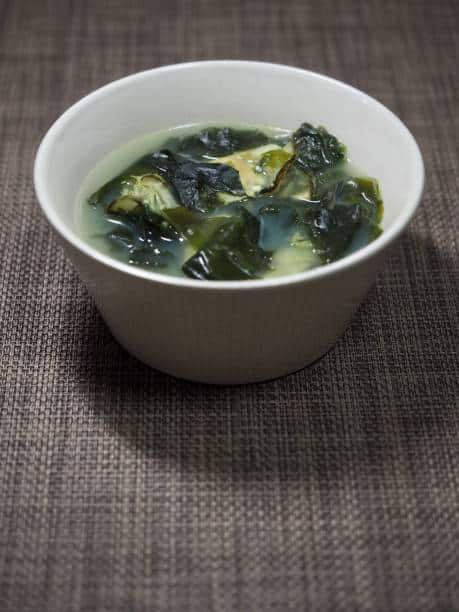South Korea: Exploring Flavors of Korean Temple Cuisine
Introduction
Korean cuisine is renowned worldwide for its rich flavors, unique ingredients, and diverse range of dishes. Among the various culinary traditions in Korea, Temple Cuisine, known as “Sunsik,” stands out for its exceptional focus on simplicity, balance, and mindfulness. Rooted in Buddhist principles, Korean Temple Cuisine offers a remarkable culinary experience that nourishes both the body and the spirit.
In this blog, we embark on a delightful journey to explore the captivating world of Korean Temple Cuisine and discover the secrets behind its tantalizing flavors and healthful qualities. The food is prepared with a focus on natural ingredients, seasonal produce, and cooking techniques that preserve the integrity of the ingredients. Korean Temple Cuisine is not just a way of eating, but a reflection of Buddhist philosophy that emphasizes the importance of mindfulness, compassion, and nonviolence.
Table of Contents

The Origins of Temple Cuisine Flavors
Korean Temple Cuisine traces its origins back to ancient Buddhist monasteries, where the monks and nuns cultivated mindfulness and self-discipline. With an emphasis on maintaining harmony between nature and the human body, Temple Cuisine became an integral part of the monastic lifestyle, reflecting Buddhist teachings of compassion, moderation, and gratitude.
Read South Korea: Timeless Beauty of Korean Traditional Temples
The Philosophy of Balance
Central to Korean Temple Cuisine is the philosophy of balance. This culinary tradition aims to achieve harmony in taste, color, and texture by utilizing a wide variety of ingredients, both wild and cultivated. The focus is on achieving equilibrium between the five flavors (sour, bitter, sweet, spicy, and salty) and incorporating a colorful assortment of vegetables, grains, and herbs.
Health Benefits
Temple Cuisine is not only a delight for the taste buds but also offers numerous health benefits. By using fresh, seasonal ingredients and focusing on plant-based dishes, this cuisine is naturally low in fat and high in nutrients. The diverse range of vegetables, roots, and herbs provide a wealth of vitamins, minerals, and antioxidants, promoting overall well-being and vitality.

Temple Cuisine Staples
Korean Temple Cuisine offers a wide array of dishes, each with its own unique flavor profile and significance. Some popular staples include:
- Bibimbap: A colorful and nutritious dish featuring steamed rice, a variety of seasoned vegetables, and fermented soybean paste (doenjang).
- Japchae: Stir-fried glass noodles combined with an assortment of vegetables, and mushrooms, and seasoned with soy sauce and sesame oil.
- Namul: A variety of seasoned and blanched vegetables, often served as banchan (side dishes).
- Jeon: Savory pancakes made from various ingredients such as green onions, mushrooms, or zucchini.
Principles of Korean Temple Cuisine
Korean Temple Cuisine is based on five principles, which are known as the Five Flavors and Colors of Temple Cuisine. These principles are:
- Nonviolence: The cuisine is entirely vegetarian, and no animal products or by-products are used in the preparation of dishes. This reflects the principle of nonviolence, which is central to Buddhist philosophy.
- Seasonality: The cuisine is prepared using seasonal ingredients that are locally sourced. This ensures that the food is fresh, nutritious, and environmentally sustainable.
- Balance: The cuisine is designed to achieve a balance of flavors, textures, and colors. The dishes are prepared using a variety of cooking techniques, including steaming, boiling, and stir-frying, to achieve a balance of flavors and textures.
- Harmony: The cuisine is designed to promote harmony with nature and the environment. The dishes are prepared using natural ingredients, and the cooking techniques are designed to preserve the integrity of the ingredients.
- Mindfulness: The cuisine is designed to promote mindfulness and awareness. The dishes are presented in a visually appealing way, and the flavors and textures are carefully balanced to promote a mindful eating experience.

Ingredients Used in Korean Temple Cuisine
Korean Temple Cuisine is prepared using a variety of natural ingredients that reflect the principles of seasonality and sustainability. The ingredients used in Korean Temple Cuisine include:
- Grains: Rice, barley, and other grains are an essential part of Korean Temple Cuisine. They are used to make porridge, soups, and other dishes.
- Vegetables: Vegetables are the mainstay of Korean Temple Cuisine. A wide variety of vegetables are used, including leafy greens, mushrooms, roots, and tubers.
- Wild herbs and greens: Korean Temple Cuisine uses a variety of wild herbs and greens, which are foraged from the surrounding forests. These include fern brake, bracken, and dandelion greens.
- Nuts and seeds: Nuts and seeds are used to add texture and flavor to dishes. Pine nuts, sesame seeds, and chestnuts are commonly used.
- Fermented foods: Fermented foods, such as kimchi, soy sauce, and doenjang (soybean paste), are an essential part of Korean Temple Cuisine. They add flavor and nutrition to dishes.
- Fruits: Fruits are used to add sweetness and flavor to dishes. Persimmons, pears, and peaches are commonly used.
- Tea: Tea is an essential part of Korean Temple Cuisine. It is used to cleanse the palate and aid in digestion.
Cooking Techniques Used in Korean Temple Cuisine

Korean Temple Cuisine uses a variety of cooking techniques that are designed to preserve the integrity of the ingredients. These techniques include:
- Steaming: Steaming is a popular cooking technique in Korean Temple Cuisine. It is used to cook rice, vegetables, and other dishes.
- Boiling: Boiling is used to make soups and broths. The ingredients are simmered slowly to extract the flavor and nutrients.
- Stir-frying: Stir-frying is used to cook vegetables and other ingredients quickly. The high heat and constant stirring help to preserve the texture and flavor of the ingredients.
- Braising: Braising is used to cook tougher cuts of vegetables, such as roots and tubers. The ingredients are simmered slowly in a flavorful liquid until they are tender.
- Fermenting: Fermenting is used to preserve and enhance the flavor of ingredients. Fermented foods, such as kimchi and soy sauce, are an essential part of Korean Temple Cuisine.
Health Benefits of Korean Temple Cuisine
Korean Temple Cuisine is not only delicious but also highly nutritious. The emphasis on natural ingredients and cooking techniques that preserve the integrity of the ingredients makes the cuisine rich in vitamins, minerals, and antioxidants. Here are some of the health benefits of Korean Temple Cuisine:
- Low in calories: Korean Temple Cuisine is low in calories and high in fiber, making it an excellent choice for weight management.
- High in antioxidants: The wide variety of vegetables and fruits used in Korean Temple Cuisine is rich in antioxidants, which help to protect the body against disease and aging.
- Promotes digestive health: The emphasis on fermented foods, such as kimchi and soy sauce, helps to promote digestive health and improve the gut microbiome.
- Rich in protein: Despite being vegetarian, Korean Temple Cuisine is rich in protein, thanks to the use of ingredients such as tofu, beans, and nuts.
- Reduces inflammation: The use of natural ingredients and cooking techniques that preserve the integrity of the ingredients helps to reduce inflammation in the body, which is associated with many chronic diseases.
- Promotes mindfulness: The emphasis on mindfulness in Korean Temple Cuisine helps to promote a mindful eating experience, which has been shown to have many health benefits, including reducing stress and improving mental well-being.
Popular Korean Temple Cuisine Dishes
Korean Temple Cuisine includes a wide variety of dishes, ranging from simple soups and porridges to elaborate multi-course meals. Here are some popular Korean Temple Cuisine dishes:



- Bibimbap: Bibimbap is a popular Korean dish that consists of rice, vegetables, and egg, served with a spicy sauce. In Korean Temple Cuisine, bibimbap is typically served with a variety of seasonal vegetables, including fern brake, mushrooms, and bellflower roots.
- Vegetable porridge: Vegetable porridge is a simple dish made with rice and a variety of vegetables, such as pumpkin, mushrooms, and beans. It is often served as a breakfast dish in Korean temples.
- Mushroom soup: Mushroom soup is a flavorful soup made with a variety of mushrooms, such as shiitake and oyster mushrooms. It is often served as a starter in Korean Temple Cuisine meals.
- Lotus root salad: Lotus root salad is a refreshing salad made with thinly sliced lotus root, seasoned with vinegar and sesame oil. It is often served as a side dish in Korean Temple Cuisine meals.
- Tofu stew: Tofu stew is a hearty stew made with tofu, vegetables, and a spicy sauce. It is often served as a main dish in Korean Temple Cuisine meals.
Mindful Eating
In Korean Temple Cuisine, eating is seen as a mindful practice. The focus is on savoring each bite, appreciating the flavors, and expressing gratitude for the nourishment it provides. Temple meals are typically eaten in silence, allowing individuals to cultivate a sense of mindfulness and introspection.
Culinary Influences and Modern Adaptations
Over time, Korean Temple Cuisine has been influenced by various factors, including regional differences and modern culinary trends. Chefs have adapted traditional recipes to suit contemporary tastes while retaining the essence of Temple Cuisine’s simplicity and balance. Today, Temple Cuisine is not only enjoyed by monks and temple visitors but also embraced by people seeking a healthier and more mindful approach to eating.

Conclusion
Korean Temple Cuisine offers a truly unique and soul-enriching culinary experience. With its emphasis on simplicity, balance, and mindfulness, it not only delights the taste buds but also nourishes the body and cultivates a sense of well-being. From its humble origins in Buddhist monasteries to its modern adaptations, Temple Cuisine continues to captivate food enthusiasts worldwide. By incorporating the principles of Korean Temple Cuisine into our own lives, we can embrace a healthier, more mindful approach to eating and discover the profound connection between our nourishment and inner peace.


[…] those seeking an extraordinary travel experience, staying in a Korean temple offers a unique opportunity to immerse oneself in serenity, spirituality, and cultural heritage. […]
Your article helped me a lot, is there any more related content? Thanks!
I’m glad to hear that the article was helpful to you! If you’re interested in more related content, I can offer suggestions based on the topic of the article you read. Could you please provide some details about the topic or specific areas you’re interested in learning more about? That way, I can tailor my recommendations to better suit your preferences.